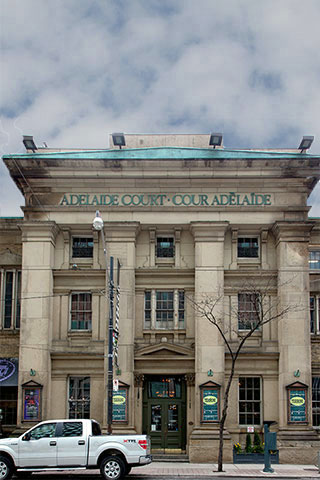This article is from our Toronto Feature series. Features from past programs are not updated.
This content is from a series created in partnership with Museum Services of the City of Toronto and Heritage Toronto. We gratefully acknowledge funding from the Ontario Ministry of Tourism, Culture and Sport, and the Department of Canadian Heritage.
"Last Public Hanging in Toronto"
On the morning of 10 March 1862, a crowd gathered outside the York County Magistrates Court to await the arrival of James Brown at the scaffold. Brown was sentenced to hang for his role in the death of journalist and politician John Sheridan Hogan during an attack by the dreaded "Brooks' Bush Gang" in December 1859.
After a night of prayer and a breakfast of coffee and cake, Brown asked a clergyman to find the woman he lived with and to urge her to turn away from her sinful ways. At 9:45 a.m. the sheriff arrived to lead Brown to the scaffold, where the condemned man proclaimed his innocence despite having been "a very bad man." At 10 a.m. Brown became the last man to be hanged in public in Toronto.
Built in the early 1850s, the building that eventually became known as the Adelaide Court House served as a centre of Toronto justice for half-a-century. Between 1909 and 1920 it housed the Arts and Letters Club, where the members of the Group of Seven first came together.

 Share on Facebook
Share on Facebook Share on X
Share on X Share by Email
Share by Email Share on Google Classroom
Share on Google Classroom




